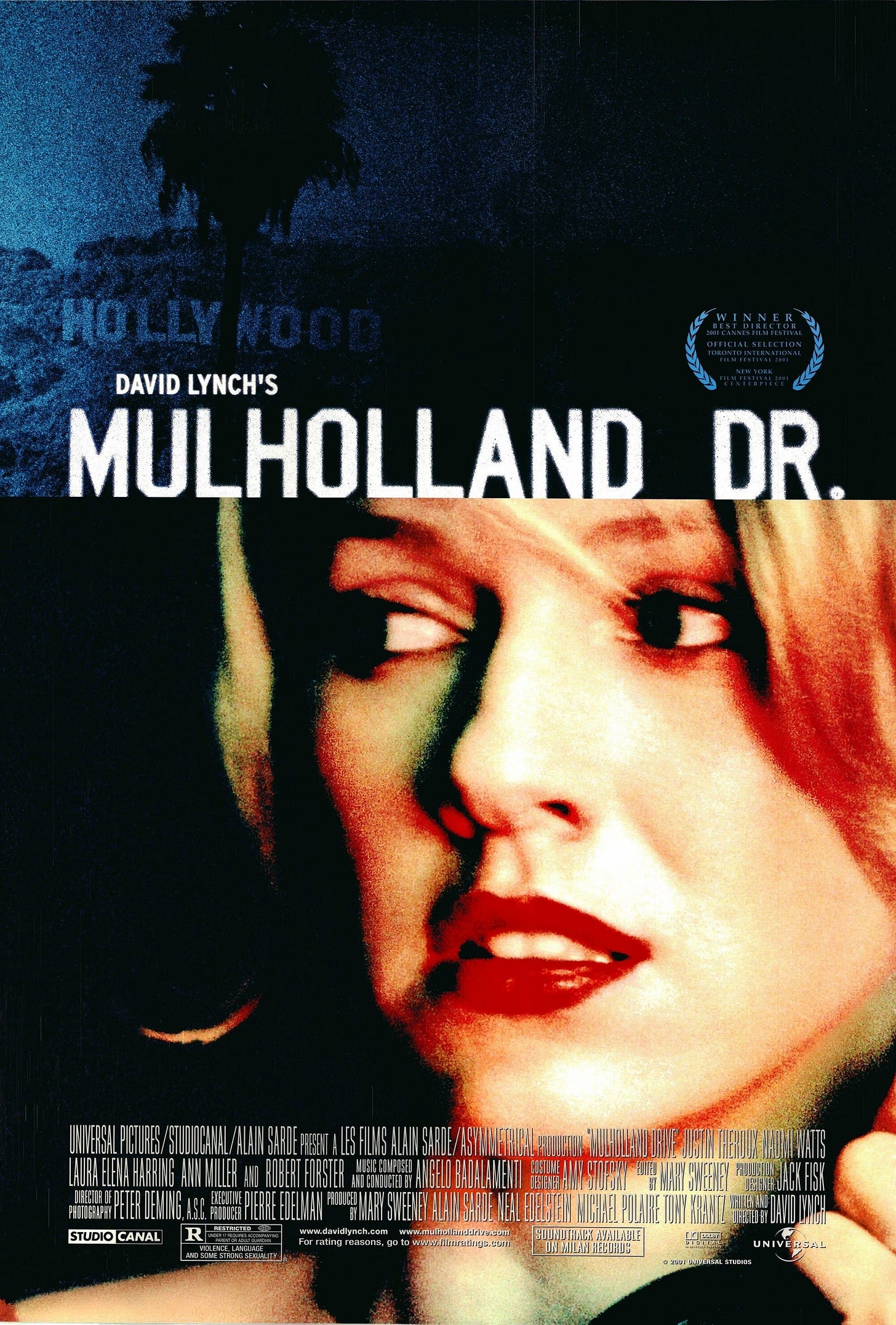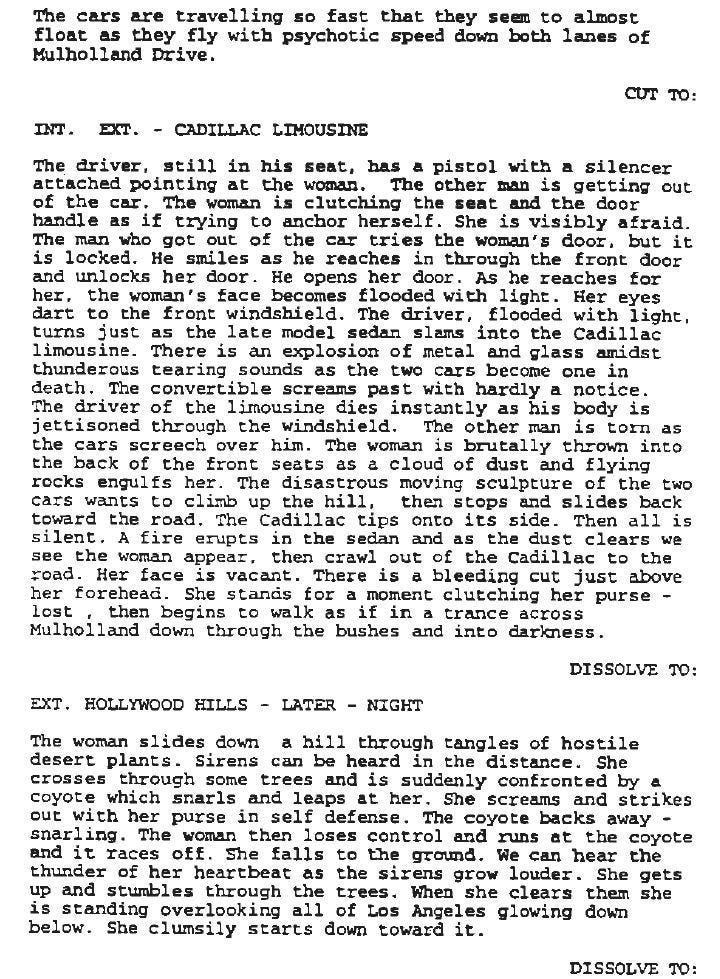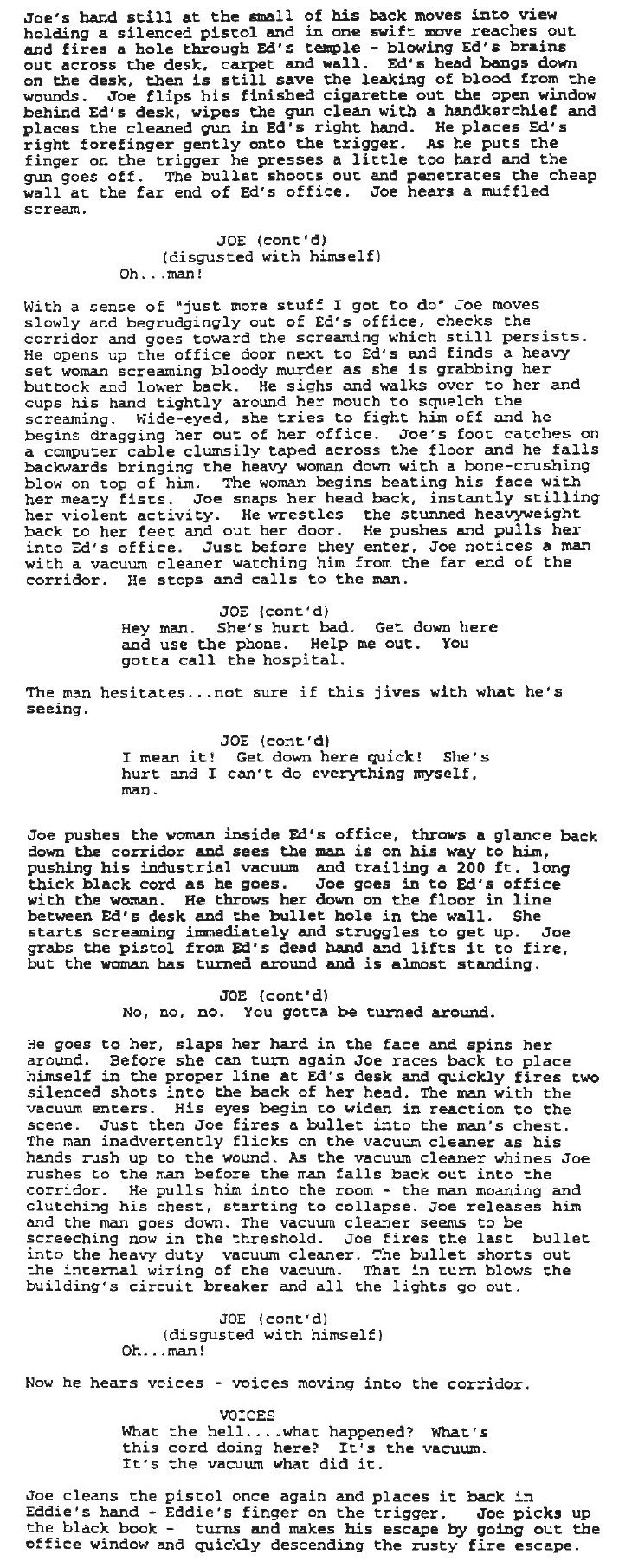Mulholland Drive (2001) Script Review | #41 WGA 101 Greatest Scripts of the 21st Century
Even in its early form as a pilot before it became a movie, David Lynch's noir story remains fascinating.
Logline: After a car wreck, an amnesiac woman and an aspiring actress in Los Angeles set out to learn what happened to her in a twisting venture beyond dreams and reality.
Written by: David Lynch
Pages: 92
The first time I watched Mulholland Drive, I was fascinated and flummoxed in equal measure. Characters like the police detective would appear then never be seen again; things would happen without clear reason (why did Dan die on seeing the homeless man?). Nothing was what it seemed. Ironically, the script helped to clear up a good portion of the mystery, even though it’s not the final shooting script.
For the script that is floating around the Internet is the one used to film a failed pilot for ABC! Apparently, the people at the network saw what was shot, hated it, and nixed it. But David Lynch found a way to repurpose the material, and turn it into a feature film. While most of what’s in this pilot ended on screen, it’s what Lynch wrote later—that is sadly unavailable—that recontextualizes everything that preceded it.
The main hook of this Mulholland Drive script is about a woman who suffers amnesia after a car crash, and an aspiring actress who helps unravel the mystery after they discover $125,000 sewn into the amnesiac woman’s purse. The amnesiac woman calls herself ‘Rita’; the actress is Betty. Other characters include a film director named Adam Kersher who rejects the mob’s order to include an actress named Camilla Jones in his new picture, and whose life subsequently falls apart; two detectives investigating the car crash; and a hit man who steals a book of phone numbers while also seemingly looking for Rita. The amnesiac woman immediately draws attention to its soap opera TV origins. It also explains why there are so many characters and threads that seemingly go nowhere: A TV series needs multiple plotlines unfolding at the same time that will only converge at the end. Imagine if the Game of Thrones pilot was used as the first half of a movie; if it didn’t bring everything together in the second half, you’d be understandably confused.
After Lynch got a second chance to put Mulholland Drive out into the world, he wrote an extra 18 pages of material. This included a romance between Betty and Rita, a trip to Club Silencio, and then recontextualized everything as a dream. From a creative point of view, it is a masterstroke. Not only does it allow Lynch to repurpose existing material in a way that makes sense, but the seemingly disjointed narrative is perfect as a dream— after all, when did dreams ever seem straightforward or coherent? It also adds a whole new interpretation to the material, layered with tragedy and foreboding. In the film, Mulholland Drive becomes the sad story of a struggling actress (the Betty character now named Diane Selwyn), whose girlfriend (the Rita character now named Camilla Jones) cruelly dumped her. Out of anger, Diane hired hitmen to kill Camilla and Adam, but agonizing about her actions, kills herself. In dreams, we get to rewrite the story of our lives; Mulholland Drive stumbled upon this opportunity to show it on film by chance.
That section of material— the additional 18 pages— is missing because it was written long after this draft dated 1999. Still, even the pilot is intriguing— a noir set in Los Angeles, the bright shiny side of Hollywood sitting adjacent to its seedy underbelly. It’s familiar territory for Lynch, one he explored in Blue Velvet and Twin Peaks, in which picturesque towns and characters have darkness brimming underneath.
There are two things to learn from Lynch’s script:
Firstly, Lynch likes to write in long paragraphs. Like loooong paragraphs! He’s a good writer, he’s established, and he’s going to shoot his own material, so he can get away with it. The rest of us are not David Lynch— so do not try this at the start of your career!
Another example:
Yet another example:
Secondly, don’t throw away your failed ideas. Keep them somewhere in the event that an opportunity opens up to revisit them someday. It was Lynch’s friend, Pierre Edleman, who started talking with him about turning the failed pilot into a feature, and found a way to get the money from Canal+ to shoot the new material.
That said, I still don’t entirely understand Mulholland Drive but then half the fun of reading and watching the works of David Lynch is to be mesmerized, as if you’re falling into a trance. If Lynch could turn an idea that was more-or-less dead-on-arrival into a story that has been ranked consistently in many ‘Best of’ lists, it offers a valuable lesson to all writers and creatives: One man’s rejected idea can be turned into the same man’s treasure.




